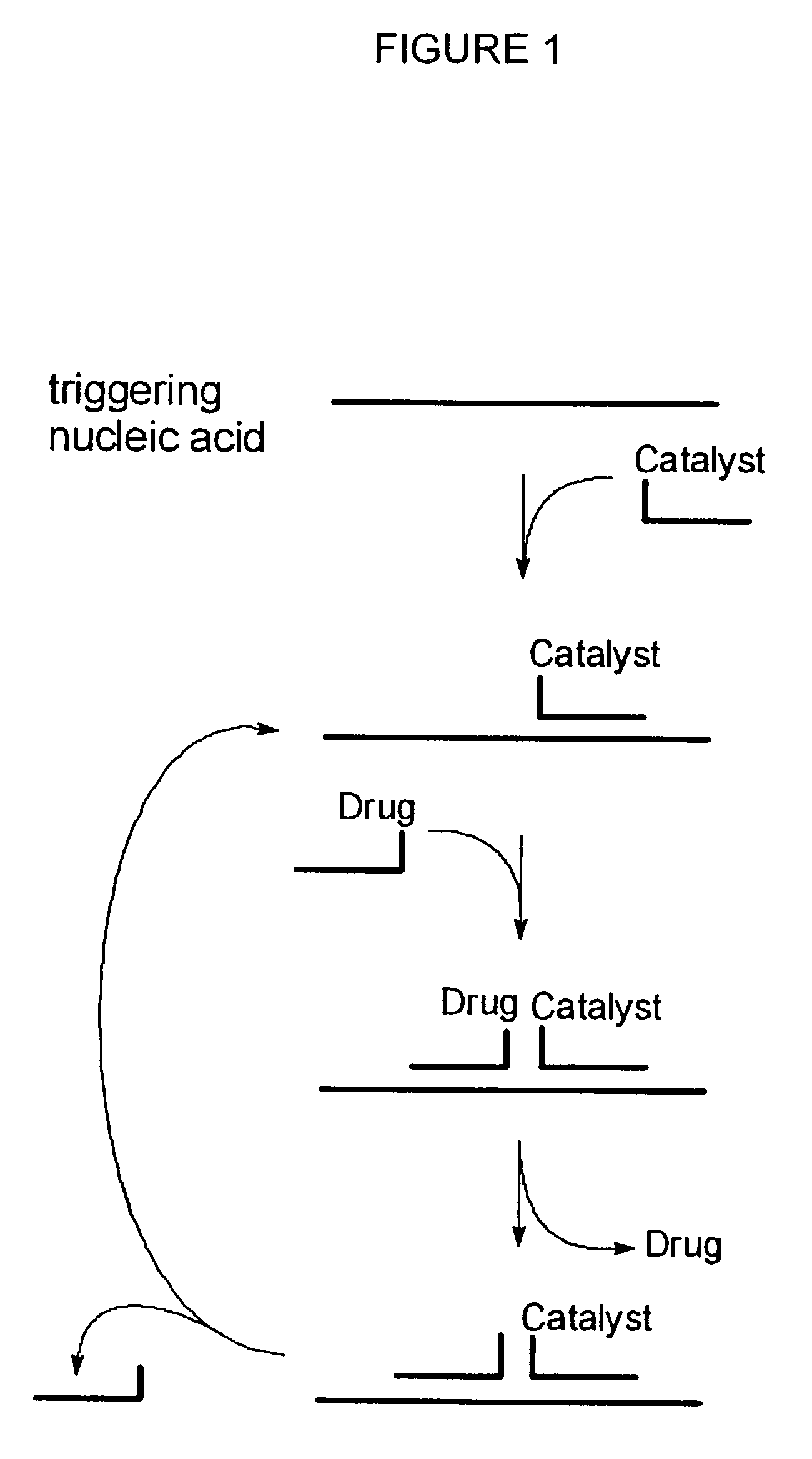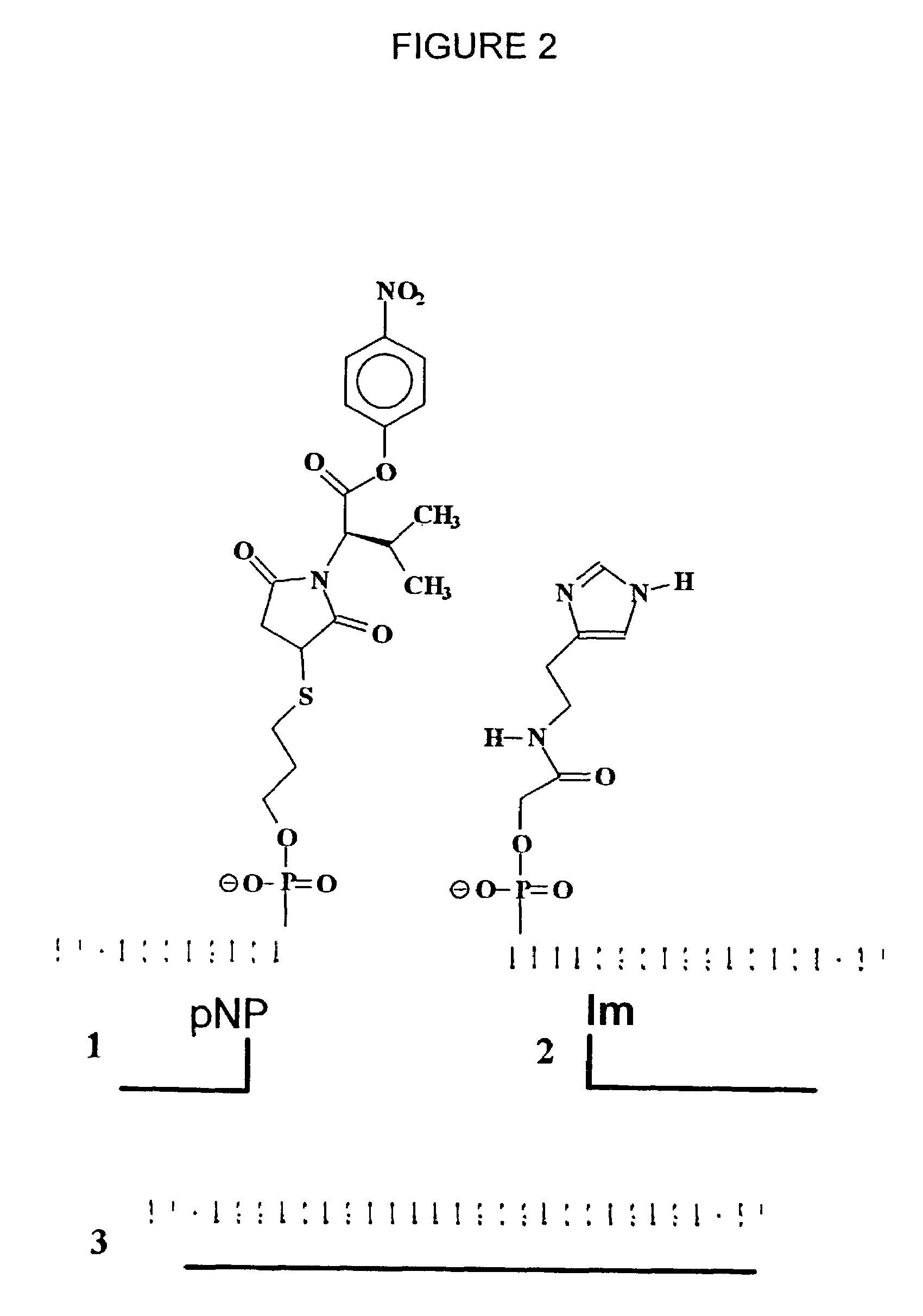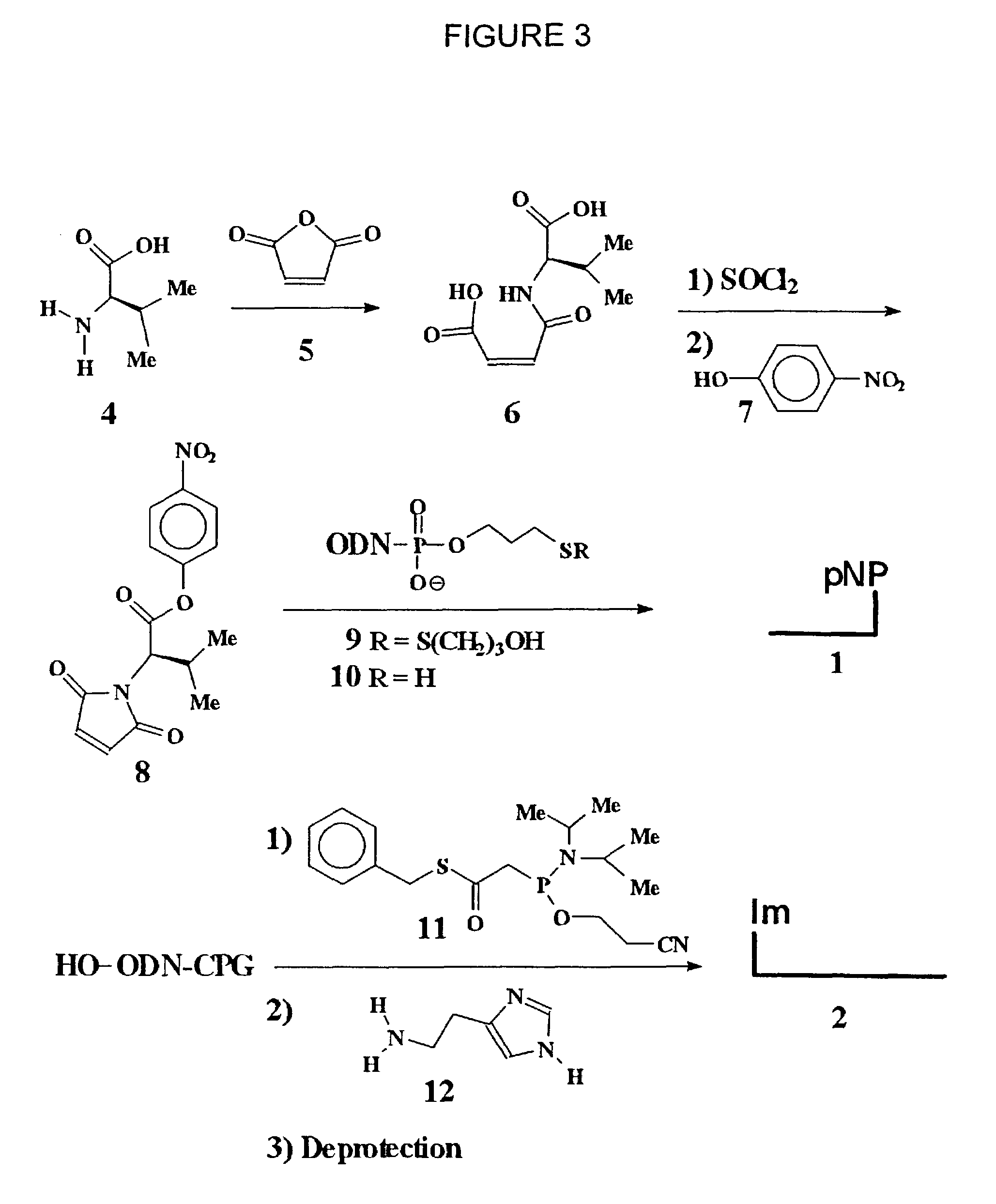Nucleic acid triggered catalytic drug and probe release
a nucleic acid and catalytic technology, applied in the field of highly selective antiviral and anticancer chemotherapeutic agents, can solve the problems of difficult to predict the therapeutic effect of targeting a viral or cancer-specific nucleic acid sequence, many currently used drugs show little selectivity, and are not easy to implement. , to achieve the effect of reducing side effects, minimizing potential damage to uninfected cells, and reducing drug cos
- Summary
- Abstract
- Description
- Claims
- Application Information
AI Technical Summary
Benefits of technology
Problems solved by technology
Method used
Image
Examples
example 1
Materials and Methods
[0078]Dichloromethane and triethylamine were dried by refluxing with CaH2 overnight followed by distillation. Histamine, maleic anhydride, and thionyl chloride were purchased from Aldrich. Tris(2-carboxyethyl)phosphine hydrochloride (TCEP.HCl) was purchased from Pierce. Reagents for automatic oligonucleotides synthesis were purchased from Glen Research. Oligodeoxynucleotides were synthesized on an Applied Biosystems 380 DNA synthesizer using phosphoramidite chemistry and recommended protocols (DMT off synthesis). 1H NMR, 13C NMR and 31P NMR spectra were obtained on a Varian UnityPlus-300 (300 MHz) or Varian Mercury-300 (300 MHz) spectrometers. The chemical shifts are expressed in ppm from TMS using residual chloroform (d=7.24) and acetone (d=2.04) as an internal standard. 31P NMR spectra were referenced against 85% H3PO4 in a coaxial insert. Flash chromatography was performed on Selecto Scientific silica gel. Thin layer chromatography (TLC) was run on pre-coated...
example 2
Materials and Methods
[0085]Dichloromethane and triethylamine were dried by refluxing with CaH2 overnight followed by distillation. Benzyl mercaptan, dimethylaminopyridine (DMAP), 1,3-dicyclohexylcarbodiimide (DCC), dichloroacetic acid, 2-(cyanoethyl)-N,N,N′,N′-tetraisopropylphosphorodiamidite, histamine, maleic anhydride, thionyl chloride and b-alanine were purchased from Aldrich. Tris(2-carboxyethyl)phosphine hydrochloride (TCEP.HCl) was purchased from Pierce. Reagents for automatic oligonucleotides synthesis were purchased from Glen Research. Oligonucleotides were assembled on an Applied Biosystems 380 DNA synthesizer using phosphoramidite chemistry and recommended protocols (DMTr off synthesis). Oligonucleotides were purified by reversed phase HPLC as described below in detail. 1H NMR, 13C NMR and 31P NMR spectra were obtained on either a Varian UnityPlus-300 (300 MHz) or Varian Mercury-300 (300 MHz) spectrometer. The chemical shifts are expressed in ppm downfield from residual c...
PUM
| Property | Measurement | Unit |
|---|---|---|
| pH | aaaaa | aaaaa |
| pH | aaaaa | aaaaa |
| temperature | aaaaa | aaaaa |
Abstract
Description
Claims
Application Information
 Login to View More
Login to View More - R&D
- Intellectual Property
- Life Sciences
- Materials
- Tech Scout
- Unparalleled Data Quality
- Higher Quality Content
- 60% Fewer Hallucinations
Browse by: Latest US Patents, China's latest patents, Technical Efficacy Thesaurus, Application Domain, Technology Topic, Popular Technical Reports.
© 2025 PatSnap. All rights reserved.Legal|Privacy policy|Modern Slavery Act Transparency Statement|Sitemap|About US| Contact US: help@patsnap.com



